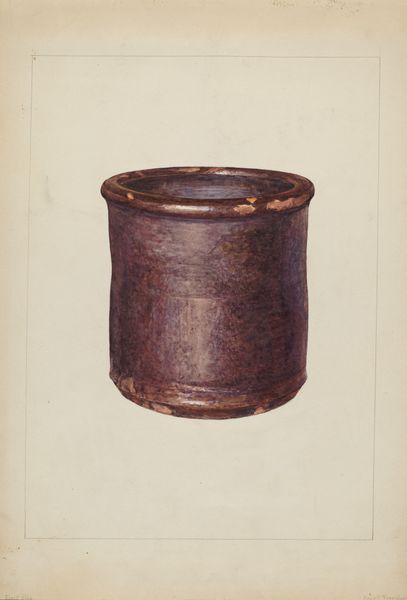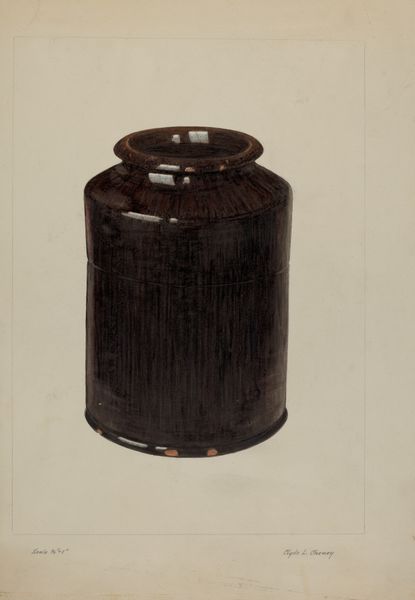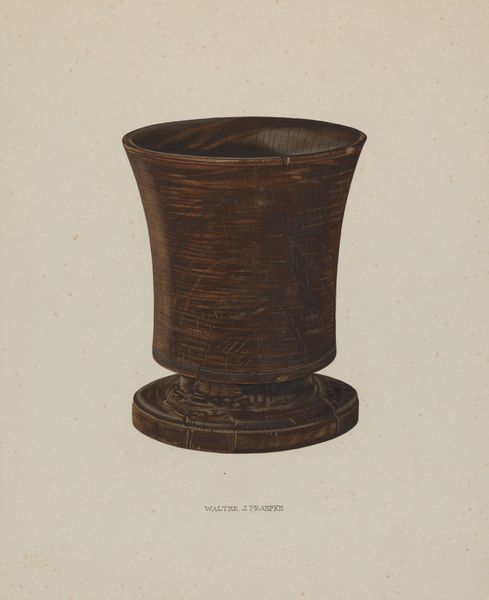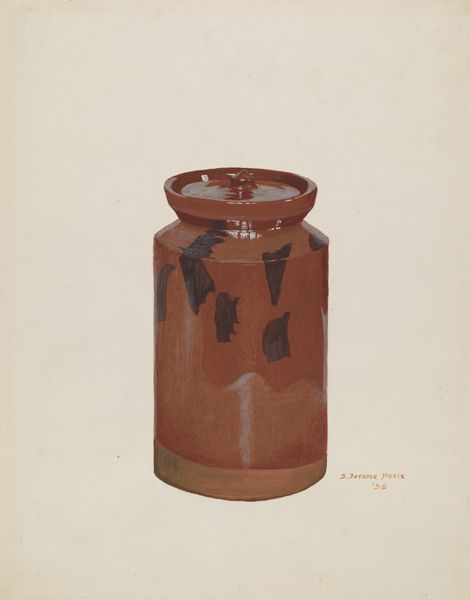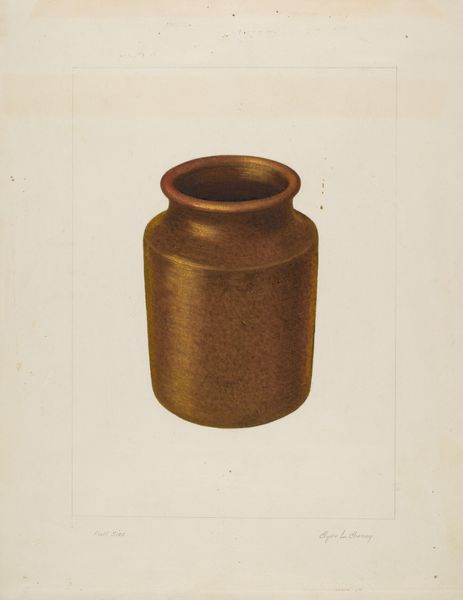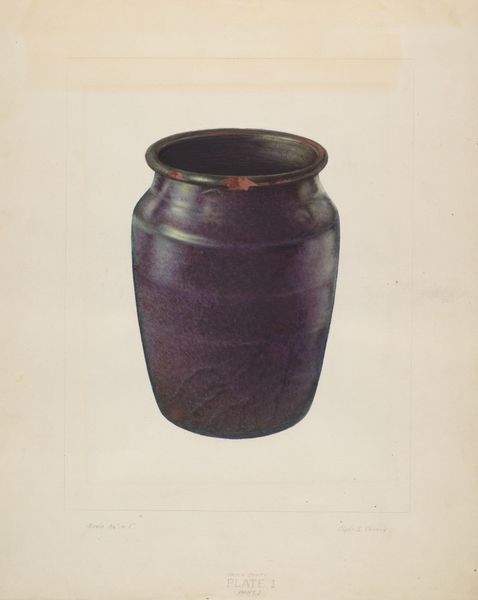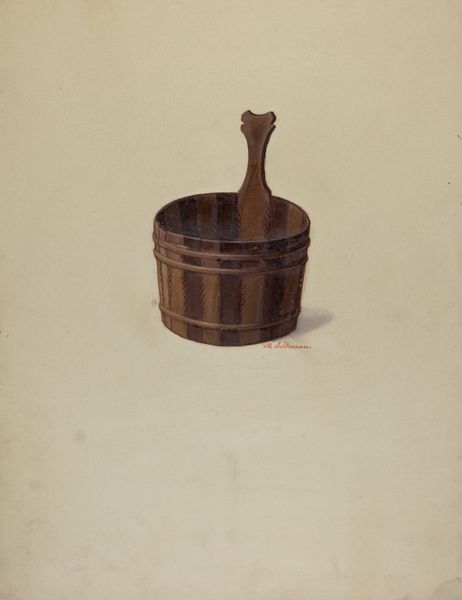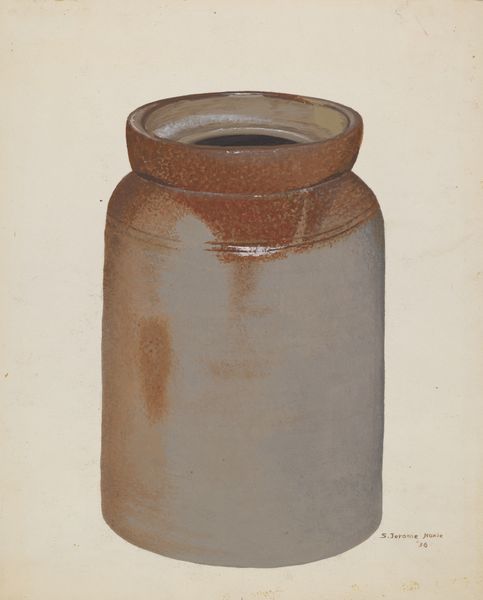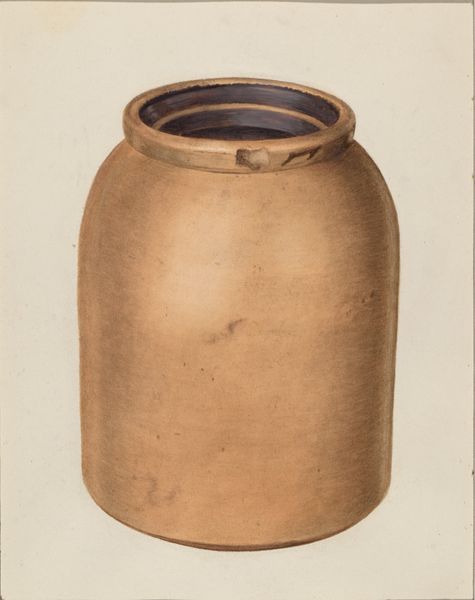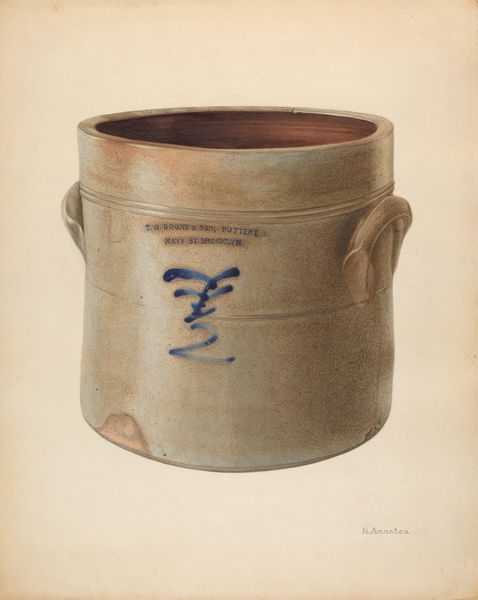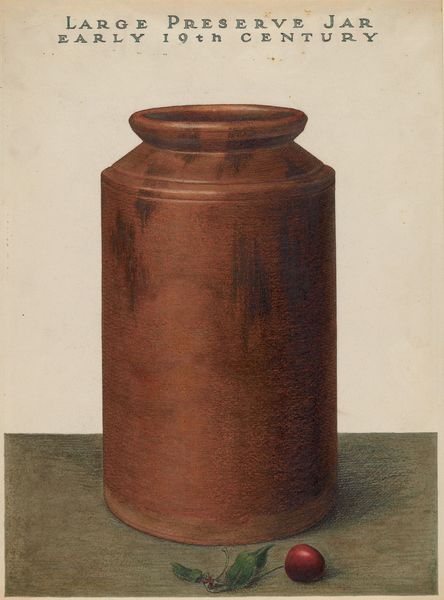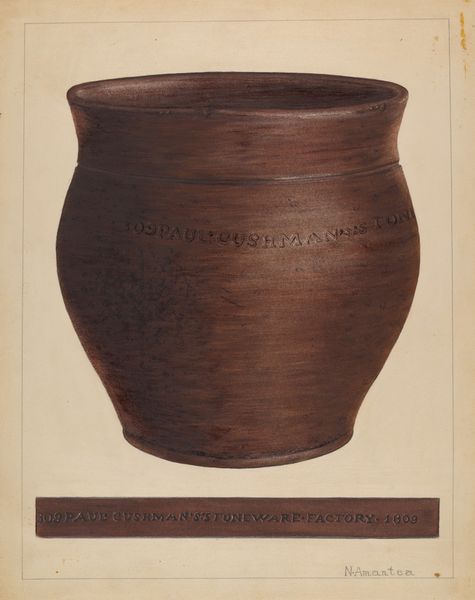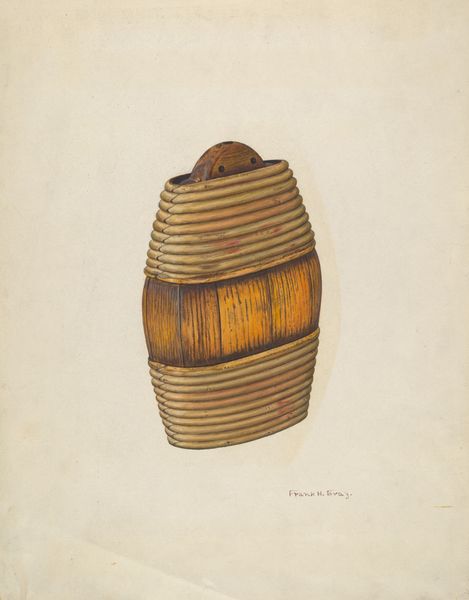
drawing, ceramic, watercolor
#
drawing
#
ceramic
#
watercolor
#
ceramic
#
watercolour illustration
#
realism
Dimensions: overall: 41.6 x 34.7 cm (16 3/8 x 13 11/16 in.) Original IAD Object: 7 5/8" high; 6 1/8" wide
Copyright: National Gallery of Art: CC0 1.0
Curator: Welcome. Here we have a watercolor and pencil drawing entitled "Zoar Flower Pot" created around 1937. Editor: My first thought? It feels wonderfully grounded, you know? Solid. Like it has roots going way back. Curator: Indeed. The flower pot depicted connects to the history of the Zoarite Separatist community. This was a group that emigrated from Germany to Ohio in the early 19th century, seeking religious freedom. Their pottery, simple and functional, became a hallmark of their self-sufficient lifestyle. Editor: And you can almost feel that history in those earth tones, right? It isn't just showing a pot; it whispers stories of craft, of community, of a very specific time and place. Does the "Zoar" marking mean something in particular? Curator: Exactly. The "Zoar" mark stamped onto the pot functions as a brand. It tells us the ceramic was created within that collective—identifying it for practical use, while simultaneously expressing Zoar identity through a tangible object. Editor: It's a beautifully humble image. But those horizontal lines give me pause, a little like prison bars. Curator: Perhaps a metaphor. A way to subtly illustrate both containment and boundary, literally what a pot *does*. But in a broader symbolic sense, it may speak to the contained religious identity within the Zoar Separatist group. Or maybe, to keep it more lighthearted, a whimsical symbol about where to draw the line with decoration, yes? Editor: That is interesting; containment, boundaries! I was approaching it visually, like contrasting lines to accentuate form. Thinking about symbolism provides layers. Curator: Precisely, visual artifacts communicate values and meanings through their repeated forms, colours, textures and placements. In art history, one tries to decode not just personal intent, but also cultural coding. Editor: Makes sense. Makes total sense. Gives my eyeballs a richer, more nourishing snack. It is no longer "just a pot!" Thank you. Curator: The pleasure is mine.
Comments
No comments
Be the first to comment and join the conversation on the ultimate creative platform.
